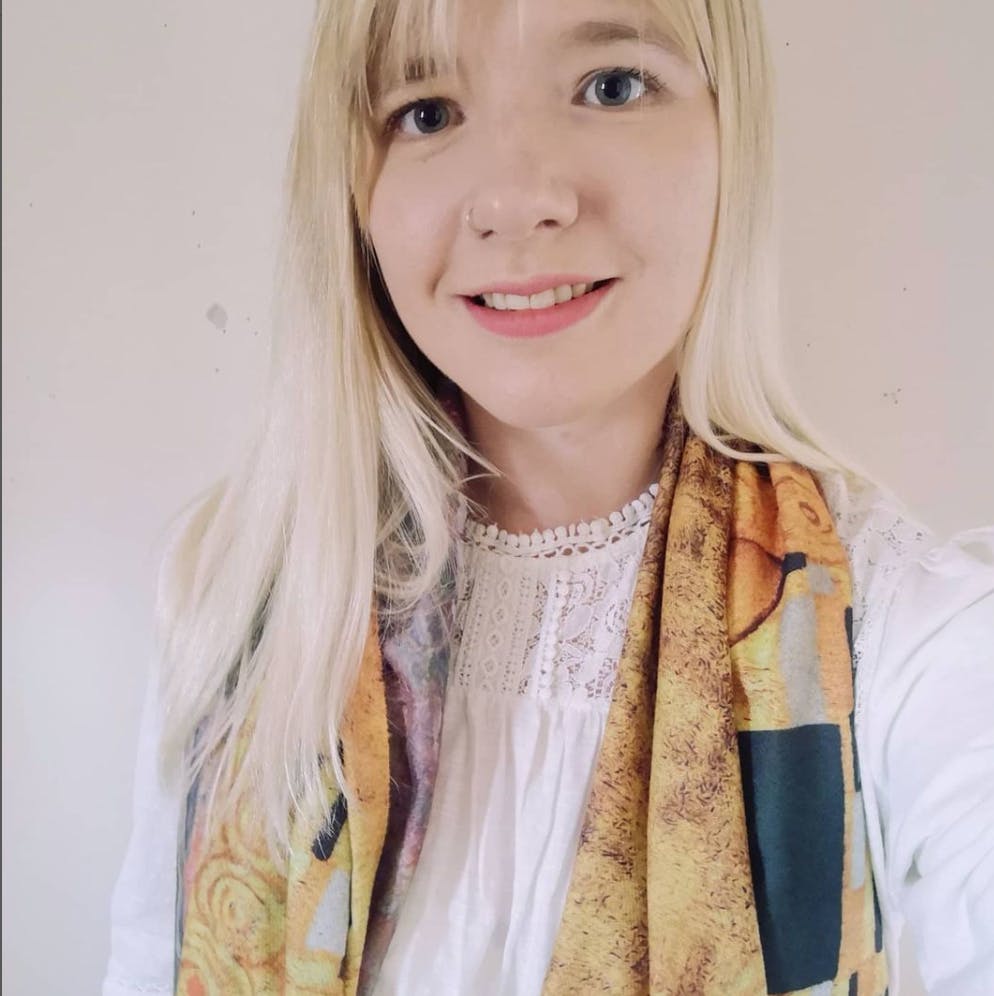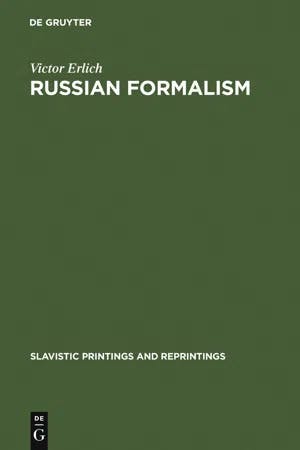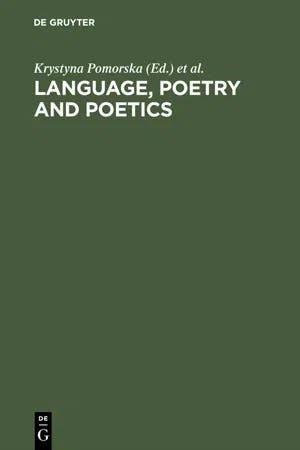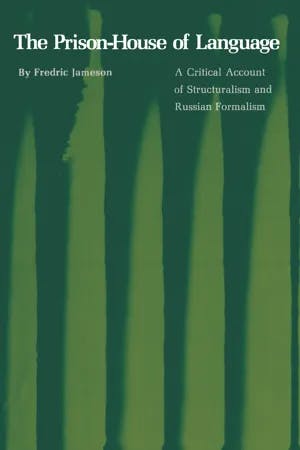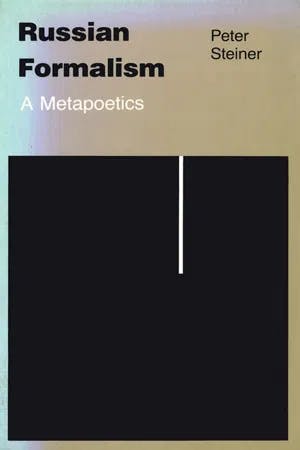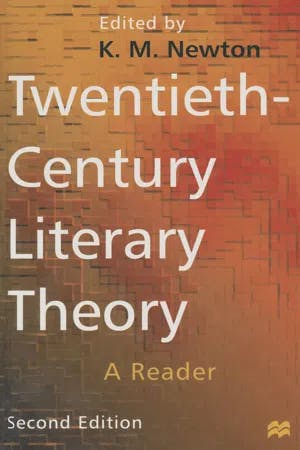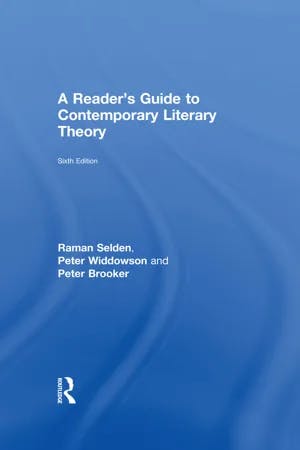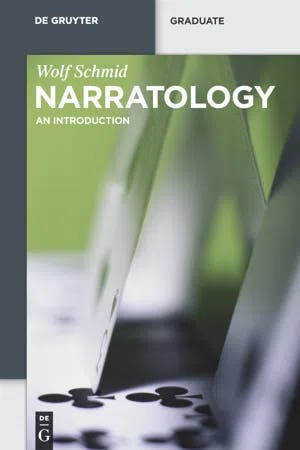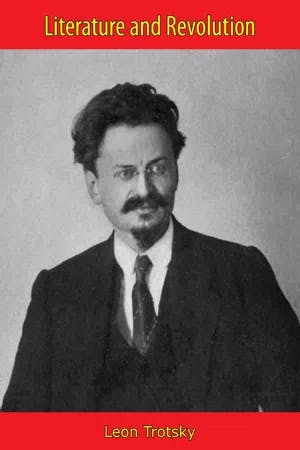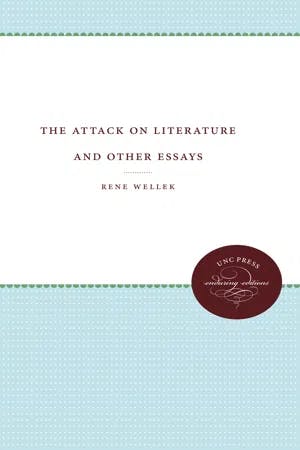What is Russian Formalism?
PhD, English Literature (Lancaster University)
Date Published: 14.09.2023,
Last Updated: 01.02.2024
Share this article
Defining Russian formalism
Russian formalism (often referred to as simply “formalism”) describes a branch of literary criticism that emerged in Russia around 1915. This form of criticism, partially influenced by futurism’s experimentation with poetry (see Barooshian, Russian Cubo-Futurism, 1910-1930, 2012), emphasized the autonomous nature of literature and refuted the idea that literature was a product of a specific historical and cultural context. Russian formalism studies how certain devices (such as symbolism, metaphors, and so on) separate literature from ordinary, everyday language. Members of this school attempted to devise a scientific method by which to describe and analyze the features of poetry and prose. As Victor Erlich puts it,
Russian Formalism keeps the work of art itself in the center of attention: it sharply emphasizes the difference between literature and life, it rejects the usual biographical, psychological, and sociological explanations of literature. It develops highly ingenious methods for analyzing works of literature and for tracing the history of literature in its own terms. (2012)
Victor Erlich
Russian Formalism keeps the work of art itself in the center of attention: it sharply emphasizes the difference between literature and life, it rejects the usual biographical, psychological, and sociological explanations of literature. It develops highly ingenious methods for analyzing works of literature and for tracing the history of literature in its own terms. (2012)
In this sense, Russian formalism shares much with its counterpart in the US, new criticism. New criticism was emerging at around the same time as Russian formalism and also advocated analyzing the text independently of the author and contextual factors. However, while new criticism focused primarily on the content of a work, Russian formalism is mostly interested in form and structure.
Russian formalism encompassed two different scholarly groups: the OPOJAZ (Obshchestvo Izucheniia Poeticheskogo Yazyka, Society for the Study of Poetic Language) in St. Petersburg and the Moscow Linguistic Circle. In "Slavic Philology in Russia between 1914-1921" (1922) Roman Jakobson and Petr Bogatyrev highlighted the main differences between these two groups. As Ladislav Matejka summarizes,
the Moscow Linguistic Circle viewed the history of art forms as unavoidably based on a sociological foundation, while the Petersburg OPOJAZ insisted on the immanent, autonomous development of art forms. (“Sociological Concerns in the Moscow Linguistic Circle,” in Language, Poetry and Poetics, 2015)
Edited by Krystyna Pomorska et al.
the Moscow Linguistic Circle viewed the history of art forms as unavoidably based on a sociological foundation, while the Petersburg OPOJAZ insisted on the immanent, autonomous development of art forms. (“Sociological Concerns in the Moscow Linguistic Circle,” in Language, Poetry and Poetics, 2015)
The Moscow Linguistic Circle consisted of its founder Jakobson, as well as Bogatyrev and Grigorii Vinokur. Jakobson was also involved in OPOJAZ, along with Osip Brik, Victor Shklovsky, and Boris Eichenbaum.
Formalism began primarily as a challenge to other schools of criticism, rather than as an independent model of reading. In The Prison-House of Language (1972), Frederic Jameson explains that the formalists criticized:
- “The idea of literature as the bearer of a philosophical message or of philosophical content.”
- “Attempts to analyze literature genetically, or, as we would now say, diachronically (biographically, through a study of sources, etc.) [...].”
- The “tendency to resolve the literary work into a single technique or a single psychological impulse—here the Formalists have in mind a formula like that of Belinsky, for whom poetry is ‘thinking in images.’”
(1972, [2020])
Frederic Jameson
- “The idea of literature as the bearer of a philosophical message or of philosophical content.”
- “Attempts to analyze literature genetically, or, as we would now say, diachronically (biographically, through a study of sources, etc.) [...].”
- The “tendency to resolve the literary work into a single technique or a single psychological impulse—here the Formalists have in mind a formula like that of Belinsky, for whom poetry is ‘thinking in images.’”
(1972, [2020])
Many have pointed out the difficulty in locating a single formalist method. As Peter Steiner writes,
This sampling of contradictory, incompatible classifications applied to the Formalists illustrates the futility of any attempt to pin down the identity of this movement by sorting out its central and marginal protagonists. Ultimately, it seems, one must come to the same conclusion as Medvedev, that “there are as many Formalisms as there are Formalists.” (2016)
This sampling of contradictory, incompatible classifications applied to the Formalists illustrates the futility of any attempt to pin down the identity of this movement by sorting out its central and marginal protagonists. Ultimately, it seems, one must come to the same conclusion as Medvedev, that “there are as many Formalisms as there are Formalists.” (2016)
Steiner does not see this as a point of criticism, instead highlighting that this conclusion “corresponds to the methodological pluralism of the Formalist approach openly displayed by its practitioners” (2016).
In Eichenbaum’s 1926 essay “The Theory of the Formal Method,” he attempts to unify the formalist method and identify the main tenets of the discipline. The principles guiding the formalist approach are as follows:
1. Formalism aims to produce a “science of literature that would be both independent and factual.”
2. Formalism studies the linguistic features of literature.
3. Formalism deals with the form and function of literature.
4. Formalism argues that literature is separate from its external contexts as literary language differs from ordinary language which is mainly communicative.
5. Formalism believes that the structure of the plot depends upon its motivation.
(Eichenbaum, in Russian Formalist Criticism, 1965)
This guide will explore these main principles, identifying how formalists approach a work of literature and how this autonomous approach has been attacked by other branches of literary criticism, specifically Marxist literary criticism.
Literariness
Russian formalism shifts the attention of literary studies from meaning to structure. In other words, the formalists are primarily interested in the way texts are put together. Unlike hermeneutics, which explores the discovery of meaning and interpretation of a text, Russian formalists seek to understand how literariness (the devices of literature) is deployed as a way to interfere with our understanding and hamper any attempts the reader has to arrive at meaning.
A definition of literariness (or “literaturnost”) is provided by Roman Jakobson. Jakobson is a major figure in Russian formalism, having founded the Moscow Linguistic Circle and co-founded the Prague Linguistic Circle (which was foundational in the development of structuralism).
Roman Jakobson defines literariness in Modern Russian Poetry (1921):
The subject of literary scholarship is not literature in its totality but literariness i.e. that which makes a given work a work of literature.
(quoted in Erlich, 2012)
In other words, literariness refers to the linguistic and formal features of literary texts that make them distinct from non-literary texts. Formalism argues that literariness interferes with communication between the reader and writer, and formalists thus seek to understand the inclusion of these disruptive elements.
Defamiliarization
In Art as Technique (1917), Viktor Shklovsky introduces the concept of “defamiliarization,” claiming it is central to formalist study. Also referred to as “ostranenie” in Russian, defamiliarization describes the process of making the everyday and ordinary seem unfamiliar or strange in order to challenge the reader’s perceptions and provide a new way of looking at the world. Schlovsky writes,
Habitualization devours works, clothes, furniture, one’s wife, and the fear of war. … And art exists that one may recover the sensation of life; it exists to make one feel things, to make the stone stony. (excerpted in Twentieth-Century Literary Theory, 1997)
Habitualization devours works, clothes, furniture, one’s wife, and the fear of war. … And art exists that one may recover the sensation of life; it exists to make one feel things, to make the stone stony. (excerpted in Twentieth-Century Literary Theory, 1997)
As indicated here, the idea of defamiliarization emerged as a challenge to the bureaucratic monotony that had begun to pervade modern life. Our perception, according to formalists, had become automated, to the extent we no longer see what is around us. The process of defamiliarization looks to remedy this, creating obscurity in poetry so that we can see art and the world anew. The formalist idea of defamiliarization can be compared to a myriad of other, similar movements across the globe such as the insistence on novelty in modernism, and Ezra Pound’s plea to artists to “make it new” (Make It New, 1935).
Defamiliarization can be achieved through the use of literary devices such as symbolism and metaphor. Defamiliarization also includes the use of foreign languages in a work and unfamiliar or unusual plotting such as temporal disruptions.
Shklovsky uses Leo Tolstoy to illustrate the technique of defamiliarization. Shklovsky writes,
[Tolstoy] describes an object as if he were seeing it for the first time, an event as if it were happening for the first time. In describing something he avoids the accepted names of its parts and instead names corresponding parts of other objects.
(1917, [1997])
One of the examples Shklovsky gives is the flogging scene in Tolstoy’s “Shame.” Here, Tolstoy ponders why flogging has been chosen as a punishment, as opposed to any other method:
Just why precisely this stupid, savage means of causing pain and not any other — why not prick the soldiers or any part of the body with needles, squeeze the hands or feet in a vise, or anything like that?
(Tolstoy, quoted in Shklovsky, 1917, [1997])
The use of defamiliarization here is to create an uncomfortableness, to wake up the reader to the sensation of torture to which they have been desensitized.
We can see examples of defamiliarization beyond Russian literature — for example in George Orwell’s Animal Farm (1945), where the presence of anthropomorphic animals allows the reader to see Stalinism from a new perspective. Similarly, Matt Haig’s The Humans (2013) is told from the point of view of an alien to emphasize the strangeness of human relationships from an unfamiliar perspective.
The dominant
The formalists view the history of literature as one which is constantly evolving. This perspective is exemplified in the notion of the dominant, a dynamic force within literature and art. Poetic forms and artistic trends change as a result of a shifting dominant derived from non-literary systems (i.e., systems outside of literature such as politics or cultural trends). In a 1935 lecture, and later essay, Jakobson defines the dominant as “the focusing component of a work of art: it rules, determines and transforms the remaining components” (“The Dominant,” excerpted in Twentieth-Century Literary Theory, 1997).
Throughout history, poetic forms have changed in terms of function, use of syntax and rhythm, and so on. As Raman Selden, Peter Widdowson, and Peter Brooker write,
No-one today could write in the idiom of Shakespearean blank verse, or a death scene in Dickens without this appearing as an eccentric, if respectful, conceit, or more likely, as pastiche or parody. The shifting dominant operates not only within particular texts, therefore, but across different periods. (2016)
Raman Selden, Peter Widdowson & Peter Brooker
No-one today could write in the idiom of Shakespearean blank verse, or a death scene in Dickens without this appearing as an eccentric, if respectful, conceit, or more likely, as pastiche or parody. The shifting dominant operates not only within particular texts, therefore, but across different periods. (2016)
We can see dominant elements of a particular work and in the broader artistic identity of a particular age. For example, Renaissance art’s dominant is visual art; Romantic art’s dominant is music, with poetry deriving its rhythm and cadence from musical melody; Realist art’s dominant is verbal art. Understanding work according to its dominant components, Jakobson argues, makes us aware of “the multiple functions of a poetic work with the comprehension of its integrity, that is to say, that function which unites and determines the poetic work” (1935, [1997]). As such, a poetic work does not fulfil an exclusively aesthetic function. Instead, “a poetic work is defined as a verbal message whose aesthetic function is its dominant” (1935, [1997]).
Jakobson further explores how the dominant shifts in different time periods, with some elements that were initially dominant becoming more peripheral and optional. He writes,
Genres which were originally secondary paths, subsidiary variants, now come to the fore, whereas the canonical genres are pushed towards the rear. (1935, [1997])
Examples of these transitional genres influenced by non-literary systems are travelogues and notebooks from specific periods as they have an important function in establishing how literary trends have evolved. The dominant shifts due to a wide range of factors; one factor for this is innovation, exemplified in art which deviates from the traditional canon.
The concept of the dominant allows for exploration of the transitions between different artistic trends over time, as well as transitional periods between different media forms. Jakobon’s work can be used to show the interplay between different artistic movements, trends, and how certain artists worked to disrupt the status quo through the use of unconventional and innovative styles.
Story (fabula) and plot (sjuzet, sjuzhet, or sujet)
One of the most influential concepts to derive from formalism is the distinction and relationship between story (fabula) and plot (anglicized from the Russian as sjuzet, sjuzhet, or sujet). Though this concept had been present in earlier formalist writings, the most developed work on the interaction between story and plot is arguably Boris Tomashevsky’s Theory of Literature (1925).
Tomashevsky writes,
Fabula is the aggregate of mutually related events reported in the work. No matter how the events were originally arranged in the work and despite their original order of introduction, in practice the fabula may be told in the actual chronological and causal order of events. (quoted in Narratology, 2010)
Wolf Schmid
Fabula is the aggregate of mutually related events reported in the work. No matter how the events were originally arranged in the work and despite their original order of introduction, in practice the fabula may be told in the actual chronological and causal order of events. (quoted in Narratology, 2010)
The fabula describes the essence of the story, whereas the sujet is the way in which the writer chooses to present those events.
in the sujet the events are arranged and connected according to the orderly sequence in which they were presented in the work.
(Tomashevsky, quoted in Narratology, 2010)
To illustrate the distinction between fabula and sujet, let’s take a look at the film Slumdog Millionaire (Boyle and Tandan, 2008). In the film, the protagonist, Jamal, enters Kaun Banega Crorepati (the Indian version of Who Wants to Be a Millionaire?) in the hopes of escaping his life of poverty in the slums. Jamal is able to answer every question because they relate to the story of his life. After each question, the film flashes back to a period of his life, revealing the relevance of the question. The fabula is the story of Jamal’s life; the sujet is the way that the writers and directors chose to arrange the film, flashing forwards and backwards to construct a compelling narrative.
The distinction between these two aspects of narrative identified by the formalists has been considered innovative. As Selden, Widdowson, and Brooker explain,
the Formalists had a more revolutionary concept of plot than Aristotle, for whom the plot should be plausible and inevitable and assure us of the familiar, general truths of life. The plot of Tristram Shandy is not merely the arrangement of story-incidents but also all the ‘devices’ used to interrupt and delay the narration. Digressions, typographical games, displacement of parts of the book (preface, dedication, etc.) and extended descriptions are all devices to make us attend to the novel’s form. (2016)
Plotting, therefore, can be a form of defamiliarization as it aims to shift our understanding of the conventional and the ordinary, hindering our attempts to easily decipher meaning in the narrative.
Defamiliarization can occur through the arranging of the story, or through the use of motifs. Motifs in this sense, according to Tomashevsky, are the smallest unit of the plot. The combination of multiple motifs creates the theme. There are two types of motifs: bound and free. A bound motif is essential to the story, whereas a free motif is seemingly supplementary to the main story and belongs to the “stylistic periphery.” For formalists, the free motifs are often the most illuminating:
Although only the bound motifs are required by the story, free motifs (digressions, for example) sometimes dominate and determine the construction of the plot. (Tomashevsky, 1925)
Free motifs are not tethered to the framework of the story; as they are an unnecessary, artistic addition, they can provide the most significant insight into a text. For example, in F. Scott Fitzgerald’s The Great Gatsby (1925), a bound motif would be the image of cars recurring throughout the text. While the cars symbolize wealth, luxury, and freedom, they are bound to the story as the car accident that kills Tom’s lover Myrtle is a central part of the narrative that cannot be omitted. The eyes of T. J. Eckleberg, a billboard for an optometrist, is an example of a free motif. The watchful eyes looking down from the advertisement signify commercialism and the hollowness of the American dream. Russian formalism would argue that this free motif reveals the meaning of the story, despite it not being essential to the plot. This motif is included purely for artistic reasons and creates a sense of defamiliarization in the reader. It is these elements that formalism is most concerned with.
For more on theories of narratology, see our guide “What is Narratology?”
Criticism
One of the major critiques of Russian formalism is that it ignores history and, by extension, the struggles of those throughout history. Leon Trotsky’s work Literature and Revolution (1923) attacks the seeming indifference of formalism towards class struggle. Trotsky refused to accept the formalist notion of art which is completely independent of social conditions. In his scathing review of the formalist school, which he describes as “partial, scrappy, subsidiary, and preparatory,” Trotsky writes,
no matter how wise the Formalists try to be, their whole conception is simply based upon the fact that they ignore the psychological unity of the social man, who creates and who consumes what has been created. (1923, [2018])
Leon Trotsky
no matter how wise the Formalists try to be, their whole conception is simply based upon the fact that they ignore the psychological unity of the social man, who creates and who consumes what has been created. (1923, [2018])
However, it is worth noting that the formalists do pay attention to history in that they study the development of literary history. For example, identifying the dominant in an artistic work or time period requires study of the evolution of historical trends. Formalists pay attention to how history shapes the form of literary texts and informs literary trends, rather than focusing on how political history influences the production or reception of a text.
Formalism’s scientific approach has also attracted criticism. Rene Wellek argues that,
The formalists essentially chose a technical, scientific approach to literature which may appeal to our time but ultimately would dehumanize art and destroy criticism. It seems to me, for instance, an error to believe that “novelty” is the only criterion of value in the process of history. This would exalt an innovator such as Marlowe above Shakespeare. (“Russian Formalism,” in The Attack on Literature and Other Essays, 2018)
Rene Wellek
The formalists essentially chose a technical, scientific approach to literature which may appeal to our time but ultimately would dehumanize art and destroy criticism. It seems to me, for instance, an error to believe that “novelty” is the only criterion of value in the process of history. This would exalt an innovator such as Marlowe above Shakespeare. (“Russian Formalism,” in The Attack on Literature and Other Essays, 2018)
Regardless, Wellek acknowledges Russian formalism’s valuable contribution to literary theory:
They resolutely put the study of the actual work of literature into the center of scholarship and relegated biographical, psychological, and sociological studies to its periphery; they presented clearly the issue of “literariness” and overcame the old dichotomy of form and content; they boldly posed the problem of literary history as an internal dynamic process. All these are genuine contributions to which we should add the many technical refinements they made in the close analysis of sound patterns, meters, and compositional forms. (2018)
Concluding thoughts
The establishment of the Soviet government around 1929 saw formalism fall out of favor, as its seeming lack of concern for class struggle relegated it as elitist. OPOJAZ disbanded, just as the Moscow Linguistic Circle had in 1924. As Erlich writes,
Where Marxian ‘deviations’ were thus excommunicated, a non-Marxian heresy could not survive. The Formalists found themselves under a savage attack. The only alternative left to them was to become silent or to acknowledge ‘frankly’ their errors. (2012)
However, Erlich adds that, despite this official ex-communication,
one would be wrong to infer that Soviet literary studies were completely cleansed of Formalism. Fifteen years of Opojaz research in The field of historical and theoretical poetics could not be read out of existence by a bureaucratic fiat. (2012)
Indeed, formalist theory had an enormous impact on literary studies, linguistics, and even Marxist criticism. Despite the short-lived nature of the formalist school in Russia, its influence can be seen in the work of Russian theorists such as Mikhail Bakhtin (famous for his theory of the carnivalesque) and on narratology, structuralism, and deconstruction. Even today, the work of the formalists remains highly relevant with defamiliarization proving a useful tool for reading, for example, unsettling aspects of speculative fiction. It appears that Sklovskij was right in 1926 when he stated that,
even while our theories are being attacked, our terminology is generally accepted and . . . our 'fallacies' find their way somehow into the textbooks of literary history.
(quoted in Erlich, 2012)
Further reading on Perlego
Formalism and Marxism (2004) by Tony Bennett
Roman Jakobson and Beyond: Language as a System of Signs (2017) by Rodney B. Sangster
Bowstring: On the Dissimilarity of the Similar (2011) by Viktor Shklovsky
Russian Formalism and Anglo-American New Criticism (2011) by E. M. Thompson.
A History of Russian Literary Theory and Criticism: The Soviet Age and Beyond (2011) by Dobrenko, E., and Tihanov, G. (eds.)
What is Russian formalism in simple terms?
What is an example of a formalist concept?
What is the difference between Russian formalism and new criticism?
Who are the key figures in Russian formalism?
Bibliography
Barooshian, V. D. (2012) Russian Cubo-Futurism, 1910-1930. De Gruyter Mouton. Available at: https://www.perlego.com/book/652970/russian-cubofuturism-19101930-pdf
Eichenbaum, B. (1965) “The Theory of the Formal Method,” in Lemon, L.T. (ed.) Russian Formalist Criticism: Four Essays. University of Nebraska Press. Available at: https://www.worldcat.org/title/russian-formalist-criticism-four-essays/oclc/330644
Erlich, V. (2012) Russian Formalism. De Gruyter Mouton. Available at: https://www.perlego.com/book/653011/russian-formalism-pdf
Fitzgerald, F. S. (2021) The Great Gatsby. Left of Brain Books. Available at: https://www.perlego.com/book/2994943/the-great-gatsby-pdf
Haig, M. (2013) The Humans. Canongate. Available at: https://canongate.co.uk/books/1981-the-humans/
Jakobson, R. (1997) “The Dominant,” in Newton, K. M (ed.), Twentieth-Century Literary Theory. Red Globe Press. Available at: https://www.perlego.com/book/3008745/twentiethcentury-literary-theory-a-reader-pdf
Jameson, F. (2022) The Prison-House of Language: A Critical Account of Structuralism and Russian Formalism. Princeton University Press. Available at: https://www.perlego.com/book/1433100/the-prisonhouse-of-language-a-critical-account-of-structuralism-and-russian-formalism-pdf
Matejka, L. (2016) “Sociological Concerns in the Moscow Linguistic Circle,” in Pomorska, K. et al (eds.), Language, Poetry and Poetics. De Gruyter Mouton. Available at: https://www.perlego.com/book/652217/language-poetry-and-poetics-pdf
Orwell, G. (2021) Animal Farm. Diamond Books. Available at: https://www.perlego.com/book/2882199/animal-farm-pdf
Pound, E. (1935) Make It New. Yale University Press. Available at: https://www.bl.uk/collection-items/make-it-new-by-ezra-pound
Schlovsky, V. (1997) “Art as Technique,” in Newton, K. M (ed.), Twentieth-Century Literary Theory. Red Globe Press. Available at: https://www.perlego.com/book/3008745/twentiethcentury-literary-theory-a-reader-pdf
Steiner, P. (2016) Russian Formalism: A Metapoetics. Cornell University Press. Available at: https://www.perlego.com/book/831325/russian-formalism-a-metapoetics-pdf
Tomashevsky, B. “Theory of Literature,” in Schmid, W. (ed.), Narratology: An Introduction. De Gruyter. Available at: https://www.perlego.com/book/652697/narratology-pdf
Trotsky, L. (2018) Literature and Revolution. Muriwai Books. Available at: https://www.perlego.com/book/3018827/literature-and-revolution-first-edition-pdf
Wellek, R. (2018) “Russian Formalism,” in The Attack on Literature and Other Essays. The University of North Carolina Press. Available at: https://www.perlego.com/book/743376/the-attack-on-literature-and-other-essays-pdf
Filmography
Slumdog Millionaire (2008) Directed by Danny Boyle and Loveleen Tandan. Available on Disney+.
Who Wants to be a Millionaire? (1998 –) Created by David Briggs and Steven Knight. ITV.
PhD, English Literature (Lancaster University)
Sophie Raine has a PhD from Lancaster University. Her work focuses on penny dreadfuls and urban spaces. Her previous publications have been featured in VPFA (2019; 2022) and the Palgrave Handbook for Steam Age Gothic (2021) and her co-edited collection Penny Dreadfuls and the Gothic was released in 2023 with University of Wales Press.
